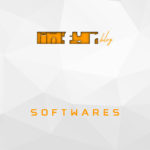
The Microsoft Store app comes built into Windows and allows you to download and install dozens of apps and games. It’s possible to open any Microsoft Store app from Command Prompt , Run dialog box or PowerShell. You can also easily add any Microsoft Store application to the Windows Right Click (Context) Menu. But, to be able to do that, you need to know the app’s Package Family Name and App ID. A Package Family Name is an opaque string derived from only two parts of a package identity – name and publisher:
< Name >_< PublisherId >
For example, the Package Family Name of the Windows Photos app is :
“Microsoft.Windows.Photos_8wekyb3d8bbwe”
Name : Microsoft.Windows.Photos
Publisher ID : 8wekyb3d8bbwe
There are many ways to find your app’s unique Package Family Name and App User Model ID :
1. You can use a powershell script.
2. You can find the AUMID by using File Explorer.
3. You can use the registry to find out the AUMID of an application that is installed for the current user.
See the related microsoft article for details on the above topics. But none of the above methods will give you the direct code for the execution of a store application. For this reason, we have coded a simple application called: Commands for Store Apps. thats all.
How to use Commands for Store Apps
1. Download the software from the link at the end of the page and run the exe file that matches the architecture of your operating system.
2. For example, let’s run the Windows Alarm & Clock application with the command, right click on the “Alarm & Clock” in the software interface and click on “Copy Command“, that’s all.

Where to use the execution codes of the Microsoft Store
You can use the following code, which has been copied to your clipboard , in different ways.
Explorer.exe “Shell:AppsfolderMicrosoft.WindowsAlarms_8wekyb3d8bbwe!App”
1. You can use this code in the Run dialog box or in the Cmd and Powershell console to launch the appropriate Store application.
2. You can use this code to create a shortcut that automatically launches the Microsoft Store application when the system starts.
3. The code can also be used to add the app to your right click (context) menu. We recommend you to use our EC menu Software to simplify the process.
4. With the help of scheduled tasks, related code can be executed at specific times of the day.
5. You can use the code inside a script too.

The first button on the interface opens the “Applications” folder, which is the folder containing the Microsoft store applications. The second button will open the Microsoft Store app and the third button will refresh the list. Please , make sure that the “Add explorer.exe to command” option in the Options menu is selected so that the copied code will work properly in the cmd and powershell consoles.

If you right click on any store app in the list, you can create an application shortcut using the “Create Shortcut” menu, or you can choose to create a bat or vbscript file .

Commands for Store Apps is a Portable Freeware Application. To uninstall the software, simply right click and choose delete.
Supported operating systems: Windows 11 , Windows 10, Windows 8.1 and 8
Supported languages: English
File: CmdSApps_x64.exe │ Virustotal
MD5: 26a17abf0e253202f7ba87cfc57ce53a
SHA1: 723f75b4100b3a60d737cc4a843140b106429871
File: CmdSApps.exe │ Virustotal
MD5: 47d49edbd75b5ef2d547d90ac199c189
SHA1: 049c0424d9a872e43e609753e3cf4e152deef34e



